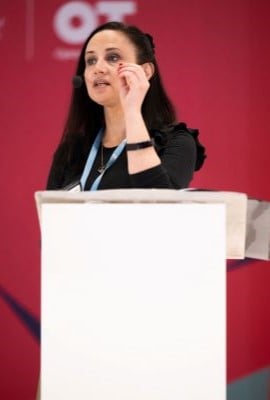In the face of ongoing macroeconomic uncertainties, the latest eyewear data published by Euromonitor International confirm a mixed outlook for the global eyewear market. In the near term, signs of progress are evident.
In USD current terms, the global value shows a reasonably solid expansion of 6% in 2024, and 3% in constant terms, albeit a slighter lower rate than in 2023, while each of the top five global optical manufacturers exhibited notable growth in 2023
Source: Euromonitor International
However, over the forecast period, eyewear players will be exposed to negative factors that threaten to dampen growth, such as geopolitical tensions and the lingering impact of the cost-of-living crisis.
The industry can look to three key opportunities to bounce back stronger in 2025 and beyond, promising developments in technology and functional-led eyewear, such as myopia control, as well as gaps between the polarised low budget and luxury ends of the eyewear market.
Affordability and premiumisation
Economic pressures have resulted in innovation in manufacturing and retailing, as evident with contact lens provider CooperVision, which has capitalised on the affordability trend through its tie-ups with Maxim in Thailand and its own Pro-Fit contact lenses in Malaysia. Manufacturing affordable products enables consumers to access items that would otherwise be beyond their reach, thereby extending the market to a broader audience.
Luxury companies, on the other hand, confront an uphill battle for value creation, as consumers’ long-term purchase patterns move towards quality and product mileage. To stay ahead of the curve, optical retailers at the luxury end will need to strengthen communication on products’ materials and features that are beneficial to the customer through meaningful stories.
Exactly a third of global respondents surveyed said that high quality was the main factor in their willingness to pay more for personal accessories and fashion items in 2024
Source: Euromonitor International’s Voice of the Consumer: Lifestyles Survey, fielded January to February 2024
Equally, luxury eyewear brands should consider collaborations with fashion brands, giving them the opportunity to extend their product offering to younger Gen Z audiences.
Myopia control products gaining ground in functional eyewear
The development of myopia control products is evolving at an incredibly fast rate, driven by the escalating prevalence of myopia worldwide, growing awareness among parents and health professionals, and mounting clinical studies supporting their efficacy, with Johnson & Johnson, CooperVision, EssilorLuxottica and Hoya all supporting the drive. Hoya’s launch of MiYOSMART in November 2020 and EssilorLuxottica’s launch of Stellest in March 2022 are prominent recent examples of this trend, but there has also been a stream of local new entrants into the market in recent years. Shamir Optical is a case in point. The Israeli firm launched an advanced myopia management lens in 2024, ergonomically designed to manage myopia while maintaining a child’s natural posture.
Eyewear undergoes modernisation of production and distribution with new tech
Digitalisation has impacted the eyewear industry in a number of different ways, such as factory digitalisation, supply chain optimisation, custom 3D printing frame design, virtual try-on solutions and smart glasses. Most recently, in September 2023, Italian eyewear company Safilo launched its new Carrera Smart Glasses with Alexa open-ear technology, while Meta’s decision to acquire a 5% stake in Ray-Ban maker EssilorLuxottica for USD5 billion in July 2024, its second biggest investment of all time, could transform the landscape of the sector, bringing AR experiences closer to mainstream acceptance, with Meta’s long-term vision to build the next generation AI. The two companies began collaborating in 2021 with the launch of Ray-Ban Meta smart glasses.
Physical optical stores remain the principal conduit for sales in eyewear, as the demand remains high for try-on experiences. Nevertheless, the adoption of digital distribution channels within eyewear, reinforced by the COVID-19 pandemic, has transformed the consumer shopping experience, with increasingly more customers purchasing eyewear online. Therefore, both traditional brick-and-mortar stores and online platforms have expanded their omnichannel strategies to maximise consumer engagement at various touchpoints along the purchasing journey. Online initiatives concentrate on offering a wider selection and social content to boost brand visibility and direct traffic to physical stores. Meanwhile, in physical stores, the focus lies in leveraging digital technologies such as scanning and 3D printing to deliver more professional and personalised services to consumers, thereby facilitating purchase transactions.
To address the bright prospect of eyewear in the post-pandemic era, it is imperative for optical players to consider the emerging trends and remain competitive. This means an increased focus on integration into technology, portfolio adjustments to include low-cost brands that speak to consumers on a budget, pushing boundaries in luxury in consideration of expansions to include young fashion brands, and holistic offerings for the increasingly fashionable myopia control space.
Read our briefing, Competitor Strategies in Eyewear, for more analysis on company strategies in eyewear. Hear from our Head of Economic Research for more analysis on the drivers of global inflation. Download our new white paper, Top Global Consumer Trends 2024, for in-depth trend descriptions, case studies and strategic recommendations, and watch our video, What do Fashion and Luxury Brands Need to Know About Gen Z?, to explore the biggest obstacles and opportunities retailers face this year.
